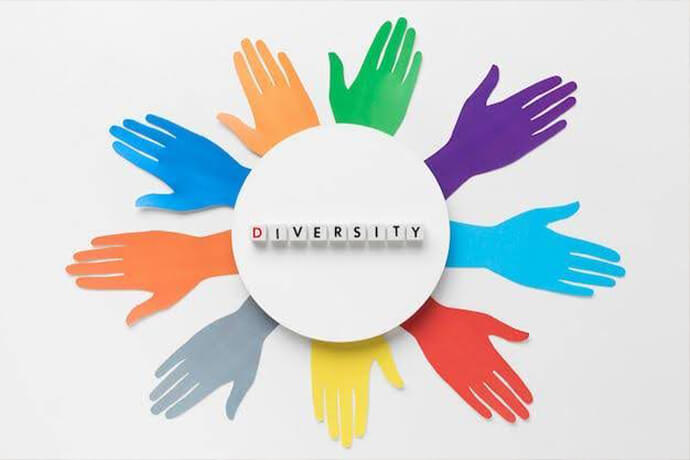 SPEAKERS
SPEAKERS
 TOPICS
TOPICS
Beyond accommodation, inclusive design celebrates diversity, creating products, environments, and services that cater to a broad spectrum of needs and abilities.

In our interconnected world, the concept of inclusivity has transcended social boundaries and has become a critical aspect of design philosophy. Inclusive design, more than accommodating differences, aims to celebrate & harness diversity in creating products, environments & services that cater to a broad spectrum of needs and abilities.
1. What is Inclusive Design?
At its essence, inclusive design focuses on developing products and environments that are accessible, understandable, and usable by individuals of varying ages, abilities, and backgrounds. It prioritizes the integration of inclusivity at the core of the design process rather than treating it as an add-on.
2. Principles of Inclusive Design
Inclusive design principles involve a holistic approach that spans physical, cognitive, and sensory aspects. It encompasses considerations ranging from physical accessibility for individuals with mobility challenges to ensuring cognitive ease for diverse learning styles.
1. Fostering Belonging and Empowerment
Inclusive design fosters environments where everyone feels included, fostering a sense of belonging and empowerment. By catering to diverse needs, it breaks down barriers and opens up opportunities for individuals who might otherwise feel marginalized.
2. Universal Design in Everyday Life
Consider the profound impact of seemingly simple design choices, such as curb cuts in cities benefiting not just wheelchair users but even parents with strollers, travelers with luggage, or those with temporary injuries. These adaptations make spaces more navigable and inclusive for everyone.

1. Leveraging Diverse Perspectives
Inclusive design promotes innovation by encouraging the consideration of diverse perspectives. It challenges designers to think creatively, uncovering solutions that cater to a broader audience. By understanding the needs of various users, new ideas and functionalities often emerge.
2. Technology as an Enabler
Technological advancements, such as voice-controlled interfaces, not only assist individuals with motor impairments but also provide convenience for users in various scenarios, illustrating how inclusive design innovations benefit a wide array of people.
1. Co-Creation and Community Engagement
Engaging directly with the diverse communities affected by design choices is paramount. Co-creation involves collaborating with end-users throughout the design process. This collaboration empowers individuals to contribute their perspectives and needs, ensuring that the final product or environment resonates with and caters to their requirements.
2. User-Centric Design Workshops
Organizing workshops where designers, stakeholders, and end-users collaborate facilitates a deeper understanding of specific needs. These workshops foster empathy among designers and stakeholders, allowing them to immerse themselves in the experiences and challenges faced by various user groups.
3. Prototyping and Iteration
Prototyping based on user feedback is integral. Designers create prototypes and gather feedback from diverse users, iterating on the design to address different needs and preferences. This iterative process ensures that the final product is refined and inclusive.
Establishing an inclusive design culture requires a multifaceted approach that extends beyond the design team:
1. Education and Training Programs
Implementing educational initiatives and training programs within organizations helps instill a culture that values inclusivity. These programs equip designers and stakeholders with the tools and knowledge needed to incorporate inclusive practices into their work.
2. Diversity in Design Teams

Encouraging diverse perspectives within design teams is crucial. A diverse team brings a range of experiences and viewpoints to the table, enabling comprehensive problem-solving and fostering innovation that caters to a broader audience.
Adherence to accessibility standards and guidelines is fundamental to inclusive design:
1. Compliance and Beyond
While meeting basic accessibility standards is essential, true inclusivity involves going beyond compliance. Designers should strive to exceed minimum requirements, aiming for designs that anticipate and accommodate diverse needs.
2. Universal Design Principles
Adopting universal design principles ensures that products and environments are usable by the widest range of people possible without the need for adaptation. These principles emphasize flexibility, simplicity, and intuitive usability.
1. Balancing Diverse Needs
Harmonizing various needs and preferences within a single design remains a complex challenge in inclusive design. Striking a balance while addressing diverse requirements is an ongoing consideration.
2. Advancements and Opportunities
The future of inclusive design holds promise. Emerging technologies, like artificial intelligence, offer opportunities to enhance accessibility further. Intelligently integrated, these innovations can bridge gaps and create more intuitive and adaptive designs.
Global Impact and Policy Integration
1. Inclusive Design on a Global Scale
Inclusive design isn't limited to specific regions. It has a global impact, driving initiatives that aim to create universally accessible products and spaces, irrespective of geographical boundaries.
2. Policy and Legislative Support
Legislation and policies play a crucial role in fostering a culture of inclusivity. Governments and regulatory bodies need to advocate for and enforce guidelines that promote inclusive design practices.
Inclusive design isn't just about meeting guidelines; it's a commitment to building a more equitable society. Its impact extends beyond aesthetics, embodying a dedication to embracing diversity and facilitating access for all.
Embracing inclusive design principles isn't just an option; it's a responsibility—a pathway to a future where diversity is celebrated, barriers are dismantled, and innovation flourishes in an inclusive environment. Every step toward inclusivity is a step closer to a world where every individual feels valued and empowered.